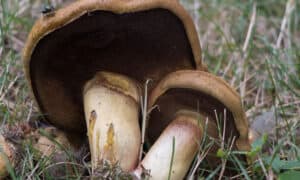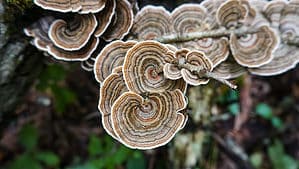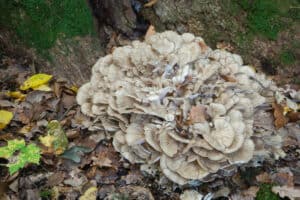If you’re interested in eye-catching mushrooms, then take a dive into the colorful world of russula mushrooms. This interesting genus of fungi contains over 2,000 species, some of which are edible and quite good to eat!
In this guide, we’ll cover common characteristics of russulas. We’ll also discuss why this genus of mushroom is generally quite difficult to typify or identify on the species level, as well as three relatively easy-to-identify, edible russulas.
So, without further ado, let’s dive in!
Fungal Classification
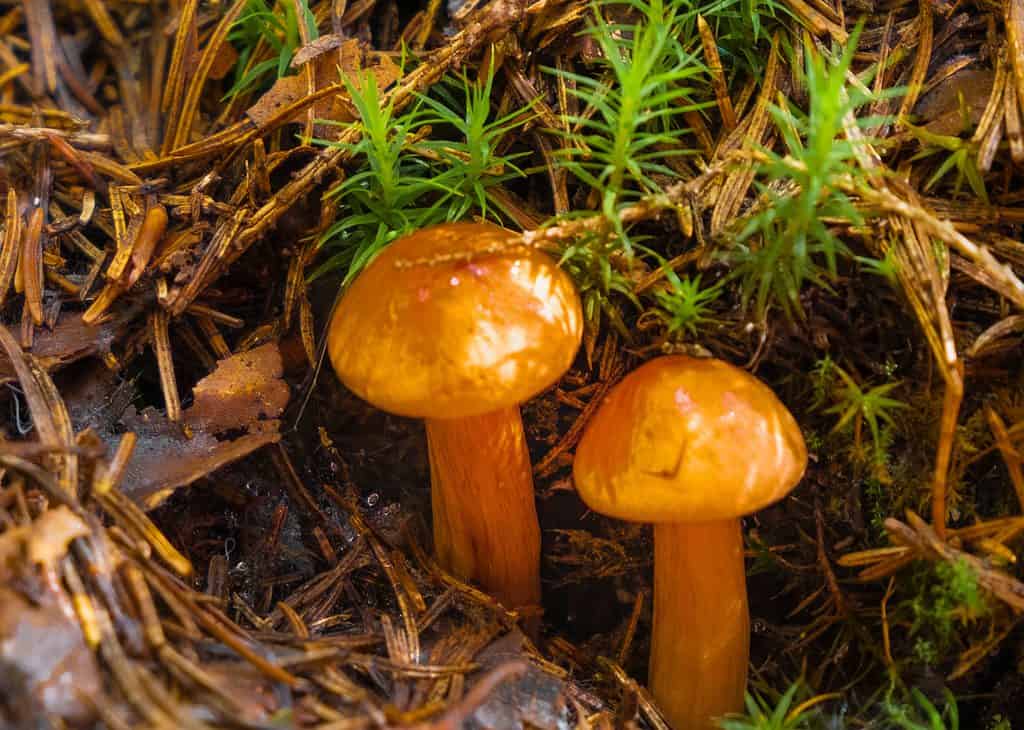
Sometimes, they’re also colloquially known as “brittle gills” as this is a defining characteristic of the majority of russula species.
©sash2s/Shutterstock.com
Russula mushrooms are commonly referred to by their genus name, Russula. Sometimes, they’re also colloquially known as “brittle gills”. This is a defining characteristic of the majority of russula species. Collectively, these mushrooms are part of the Russulaceae family.
As the largest genus in the Russulaceae family, the Russula genus contains over 2,000 species worldwide.
Common Russula Characteristics
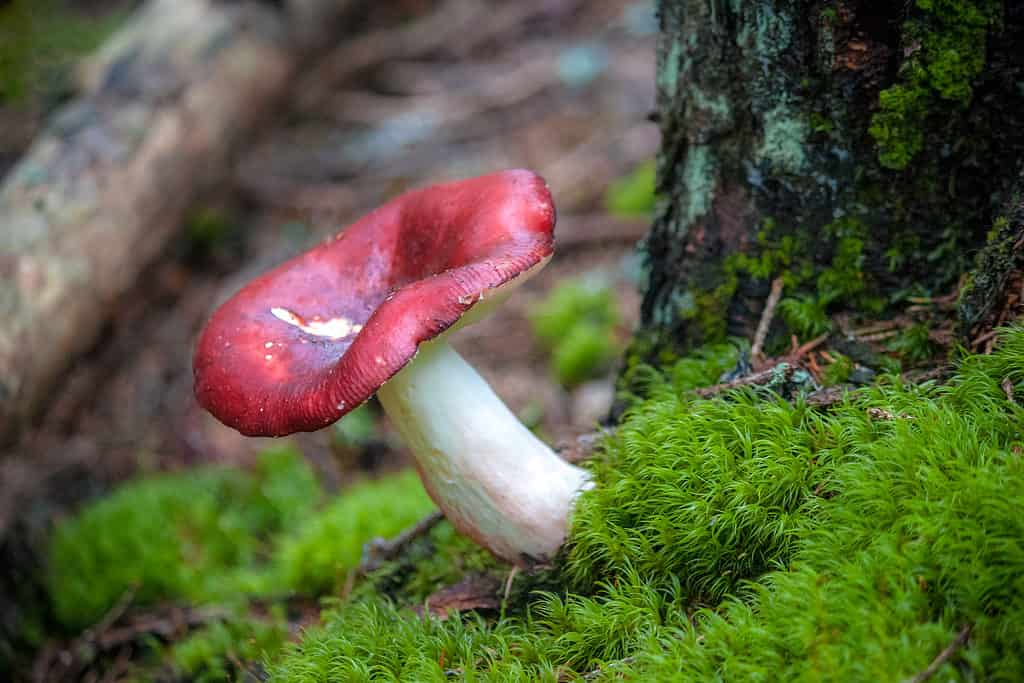
Many russula species are red-capped, but the genus also contains pink, green, brown, purple, yellow, gray, and white-capped mushrooms.
©Viliam.M/Shutterstock.com
First, before we dive into the difficulty of distinguishing most of the species, we’ll cover the common characteristics of russulas in general.
Regarding identification, you can typically confirm a russula by its colorful, almost velvety (but non-shiny) cap. They also typically have a thick white stipe, brittle, crowded, attached gills, and lack of a veil or milky secretion from the gills. The stipe and cap are also brittle and will typically snap like chalk.
Many russula species are red-capped, but the genus also contains pink, green, brown, purple, yellow, gray, and white-capped mushrooms. Therefore, while colorful caps are a solid general rule, remember there are exceptions.
All russula are mycorrhizal. You can find them growing from the soil since they derive their nutrients from the roots of plants through a symbiotic fungi-plant relationship. Specifically, russulas are ectomycorrhizal, which means the fungal hyphae (the underground branching filaments) do not penetrate into the cortical cells of the plant roots (as compared to endomycorrhizal fungi which do).
A Note About Typifying Russulas
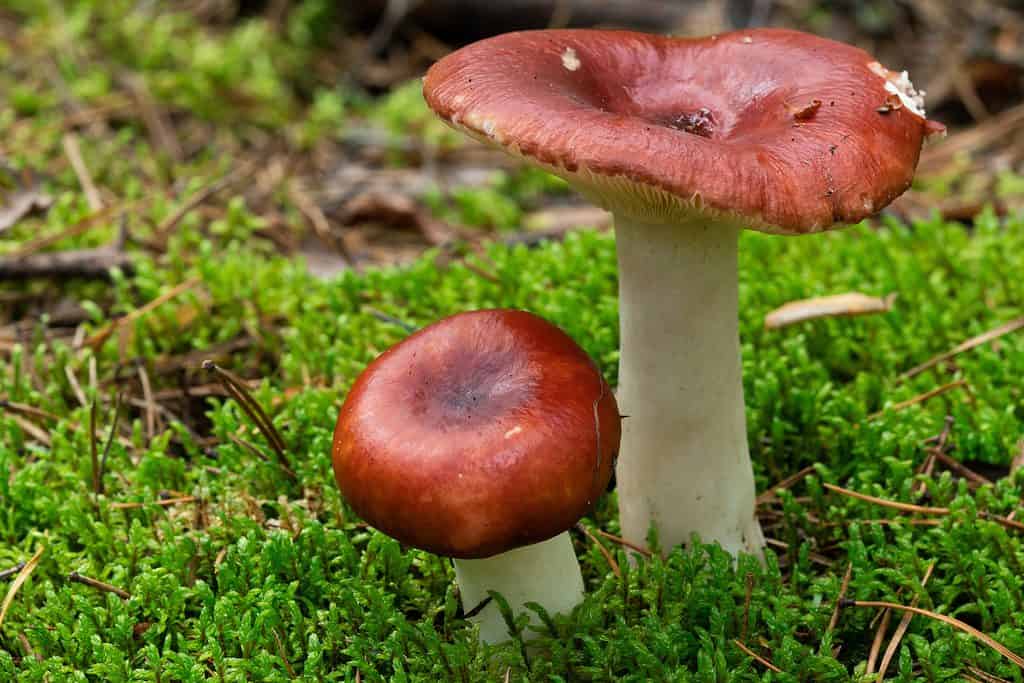
For russulas, the best bet is probably to get to know the documented edibles in your area and learn how to identify them.
©Aleksandrkozak/Shutterstock.com
In the world of mycology, russulas are often regarded as an absolute pain to identify on the species level, even for experienced mycologists with a microscope.
Especially for the hundreds of red-capped species, macroscopic identification is often based on splitting rather subjective hairs, such as exactly what shade of orange or red, how easily the cuticle (skin) of the cap peels away, and how mild or acrid the mushroom tastes. Additionally, as expert mycologist Micheal Kuo points out in his wonderfully insightful article on species identification of russulas, even microscopic parameters for identification are often subjective and vague.
As such, many amateur mushroomers keep the identification of russulas to the genus level or stick to identifying a couple species, such as Russula cyanoxantha. This choice edible European russula, commonly known as the charcoal burner, is distinct for its pliable, nonbrittle gills. It also has a charcoal-purple cap, further setting it apart from the many more brightly colored russulas.
Yes, some guides split russulas into types such as “acrid-tasting” versus “mild-tasting” russulas. But the problem here is that taste can be wildly subjective and as such is not a great primary parameter for separating groups of mushrooms.
Additionally, many edible russulas are indeed “peppery” when tasted, adding to the confusion. Furthermore, guides differ widely on the edibility status of russulas depending on the region and the regional preparation and cooking practices that can render the mushrooms to be much more gentle on the stomach.
Defining More Clear-Cut Mushroom Types
Generally, it’s less useful to create types of mushrooms within the same genus unless there are distinct, clear-cut features that separate species into groups. Instead, you could think of categorizing large groups based on criteria. For instance, spore-dispersal tissue like gills vs. teeth vs. pores. Or, you could categorize based on saprobic vs. parasitic vs. mycorrhizal. Some species can display more than one manner of behavior in their life cycles such as both mycorrhizal and saprobic.
Sometimes species can be typified within a genus based on more clear-cut distinctions. For example, in the Agaricus genus, you can loosely group these mushrooms into red-staining, yellow-staining, and non-staining mushrooms.
For russulas, the best bet is probably to get to know the documented edibles in your area and learn how to identify them and distinguish them from ones that can cause more severe GI upset, such as Russula emetica.
Examples of Edible North American Russulas
Now, if you’re looking for some excellent choices for edible russulas in North America, we’d suggest learning about and foraging for the following:
- Russula brevipes
- Russula vesca
- Russula parvovirescens
Russula brevipes
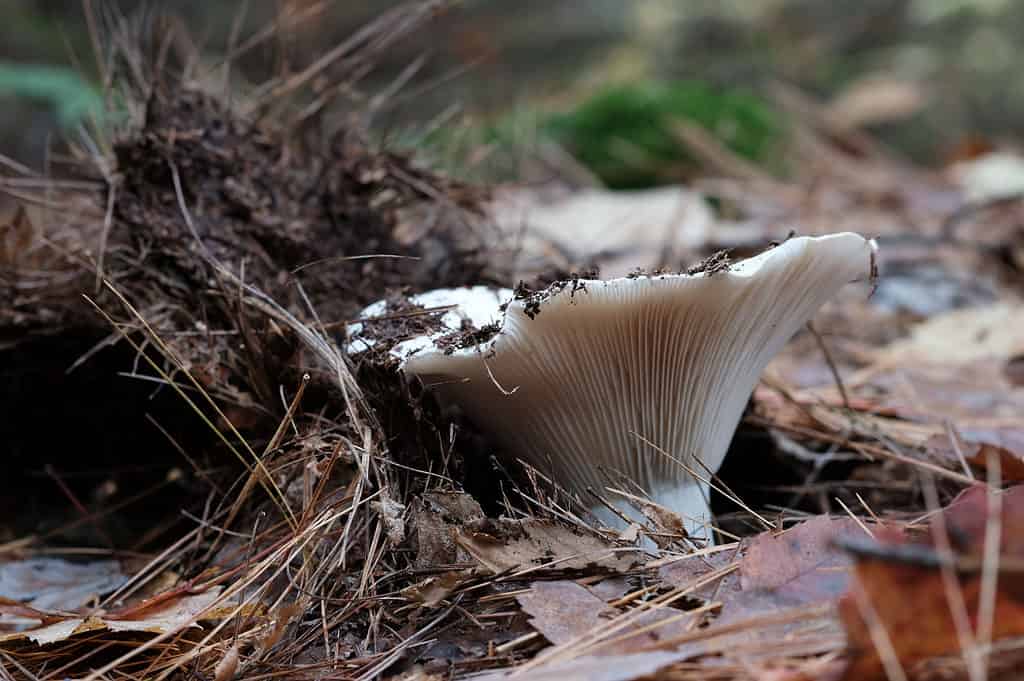
In the world of mycology, russulas are often regarded as an absolute pain to identify on the species level, even for experienced mycologists with a microscope.
©nomis_h/Shutterstock.com
So, if you’re hoping to identify an easy-to-identify edible russula in North America, check out Russula brevipes, the short-stemmed russula. This mushroom, unlike many russulas, has a modest cap color that starts out white but can turn tan-light brown as the mushroom ages. The stipe should be fairly stubby in comparison to the width of the cap. The gills and stipe are also white. Like most russulas, it has brittle gills and a chalky stem.
Many people describe this mushroom as having a cuticle that is difficult to peel from the cap. This is known as having an adnate cuticle. You can test this by trying to roll the outer edge of the cap cuticle away from the cap and toward its center with your thumb.
Possible Look-a-Likes
This mushroom looks almost indistinguishable from several white mushroom species in the Lactarius genus of the Russulaceae family. However, you can quickly distinguish them by cutting or pressing the gills of the mushroom. If it does not produce a milky substance, and it fits the rest of the above description, you likely have found Russula brevipes.
The true species should have a mild taste. So if you take a tiny piece of the mushroom, nibble, and hold it on your tongue for about 15 seconds (before spitting it out) and it develops a spicy flavor, it’s likely a closely-related species of russula that may cause some gastrointestinal upset if not properly boiled.
Interestingly, this mushroom actually turns into the well-loved and commercially sold lobster mushroom once it is parasitized by the fungus, Hypomyces lactifluorum. It forms an orange-red crusted skin over the mushroom and produces a highly prized flavor.
Russula vesca
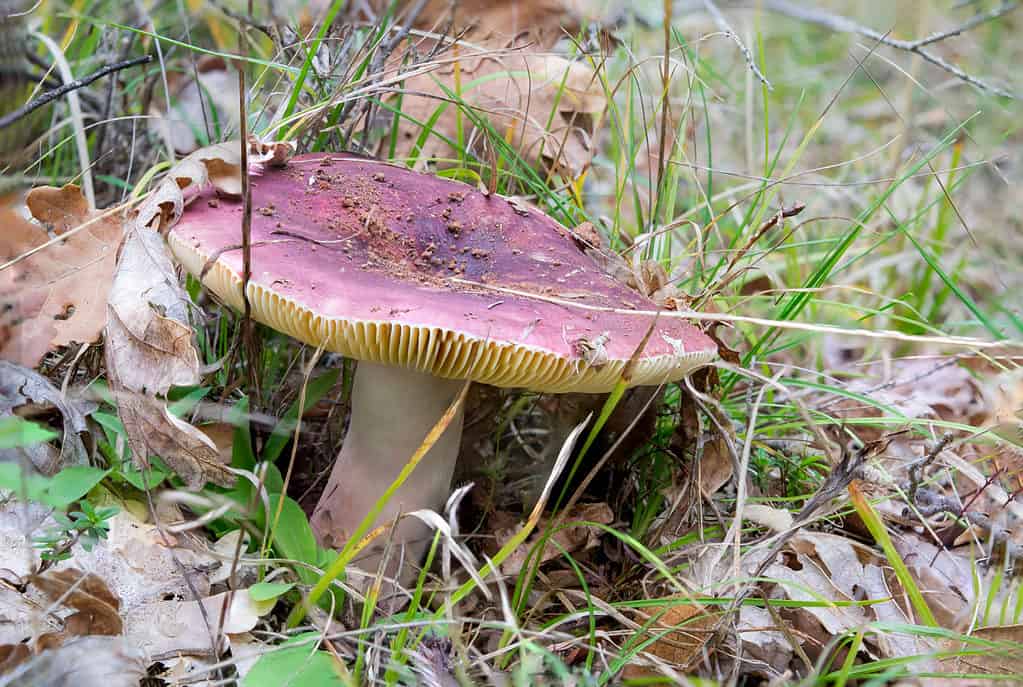
While this russula varies in color, it often has a delightful pink or wine cap.
©Svarun/Shutterstock.com
The next edible North American russula on our list is Russula vesca, the flirt. This mushroom is considered by some to be the finest-tasting russula and a choice edible mushroom. It is also known as the bare-toothed brittle gill. About 1mm around the margin of the mushroom is not covered by the cuticle of the cap and therefore exposes the gills.
The color of the cap can range from pink to deep wine, sometimes with olive, brown, or green accents. The stem typically reaches up to 4 inches long with a similar max cap width. Like most russulas, the gills are brittle and the stipe snaps like chalk. The gills are white and fairly crowded. People often report the cuticle easily peels about halfway to the center of the cap.
Russula virescens
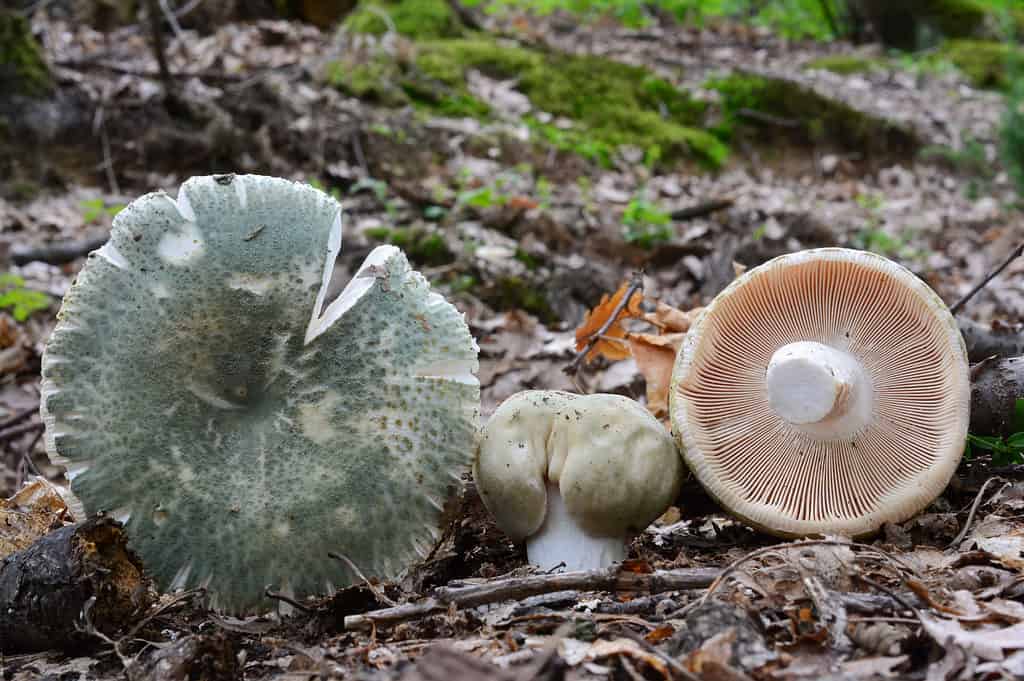
With a nutty flavor, this russula is prized among chefs.
©AleksandarMilutinovic/Shutterstock.com
Finally, we have the lovely blue-green capped russula, Russula virescens. Among other russulas, this mushroom is easy to identify and a good edible. The cap is incredibly distinct with its gorgeous blue-green color and mottling of scales from cracking. Generally, people report that the cuticle of this mushroom is easily peeled.
The stipe is smooth, dry, and white, and typically grows up to 2.25 inches long. The cap generally reaches about 3 inches long, making it fairly small among russula species. This species is widely distributed along the East Coast to parts of east Texas. Generally, you can find Russula virescens fruiting from mid-Summer through Fall.
Editor’s Note: While A-Z Animals does its best to ensure the accuracy of its content and photography, do not eat wild mushrooms without firsthand knowledge from a local mycologist or mushroom expert as many types of mushrooms look similar.
Up Next:
- Hedgehog Mushrooms: A Complete Guide
- Chicken of the Woods Mushrooms: A Complete Guide
- The 13 Best Places to Find Mushrooms
The photo featured at the top of this post is © Svarun/Shutterstock.com
The information presented on or through the Website is made available solely for general informational purposes. We do not warrant the accuracy, completeness, or usefulness of this information. Any reliance you place on such information is strictly at your own risk. We disclaim all liability and responsibility arising from any reliance placed on such materials by you or any other visitor to the Website, or by anyone who may be informed of any of its contents. None of the statements or claims on the Website should be taken as medical advice, health advice, or as confirmation that a plant, fungus, or other item is safe for consumption or will provide any health benefits. Anyone considering the health benefits of particular plant, fungus, or other item should first consult with a doctor or other medical professional. The statements made within this Website have not been evaluated by the Food and Drug Administration. These statements are not intended to diagnose, treat, cure or prevent any disease.
Sources
- NCBI, Available here: https://www.ncbi.nlm.nih.gov/pmc/articles/PMC7669817/
- Nature Serve, Available here: https://explorer.natureserve.org/Taxon/ELEMENT_GLOBAL.2.911961/Russula_vesca
- Texas Mushrooms, Available here: https://www.texasmushrooms.org/en/russula_parvovirescens.htm
Thank you for reading! Have some feedback for us? Contact the AZ Animals editorial team.



